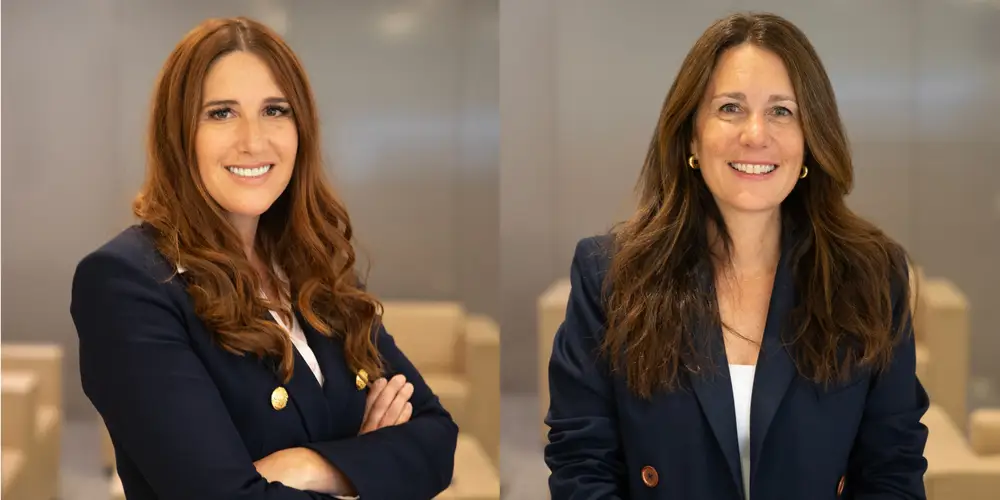Top Morgan Stanley bankers break down 3 common mistakes startup hedge funds make

Penny Novick and Kim Shaw are global coheads of prime brokerage at Morgan Stanley.
It’s shaping up to be a bustling period for new hedge funds. Nearly 150 launches are expected to spin out of larger, $1 billion-plus funds between 2024 and the first half of 2025, according to hedge fund research firm PivotalPath.
But the actual fundraising environment is more complicated. Many of those new launches are being seeded by existing multistrategy giants who have excess capacity to deploy thanks to strong performance — 7.8% annually over the past five years, according to PivotalPath’s multistrat index. By comparison, PivotalPath CEO Jon Caplis explained, institutional allocators, constrained by illiquid private investments, have less liquidity to offer right now.
That’s partially how you explain one of the most anticipated launches in recent years — multistrat Jain Global — falling well short of fundraising expectations, even as overall new launches are up.
Startup funds have allies in investment bank prime brokerage units, a crucial lifeline to hedge funds and a growing business on Wall Street. Prime brokers don’t simply finance trades but also serve as a consigliere, especially in the early stages of a fund’s life.
Morgan Stanley has long been home to one of the top prime brokerages, and serving hedge funds is key to the bank’s equities ambitions. The business has gained renewed focus under new CEO Ted Pick.
Their prime services team, led since 2021 by global coheads Penny Novick and Kim Shaw, caters to established titans but also advises on roughly 50 to 75 hedge fund launches globally each year, depending on the environment. That part of the business is akin to a venture-capital model — work with a broad swath of upstarts to win over the long-term trust and favor of the next D.E. Shaw or Viking Global.
Morgan Stanley’s prime team helps funds raise capital and finance their operations. They also provide counsel and advice to new managers to improve their odds of success.
While a new launch’s viability will ultimately come down to investment performance, there are factors that can trip up an otherwise promising launch — or, if handled shrewdly, set them up for prosperity.
B-17 recently spoke with Novick and Shaw about the pitfalls they see emerging managers encounter and the advice they prescribe over and over again.
In an environment where institutional investors are becoming increasingly discerning with their capital allocations, nailing the intangibles is critical.
These are 3 of the top stumbling blocks for startup fund managers and how to handle them, according to Novick and Shaw. The responses are in their own words, edited for length and clarity:
It’s tempting to cut corners on costs on the non-investment side of the business — don’t
Penny Novick:
Some new fund managers at first don’t always fully appreciate that getting the non-investment side of the business right is super important. Hiring a strong COO, CFO, and operations people who are well-integrated into the business is crucial for not only the launch but also the long-term success of the business. Additionally, choosing the right systems, vendors, and partners is really going to have a big impact on the ability of that manager to be able to execute on their strategy.
It’s similar to when a PM goes to a different platform, and they find that sometimes, even when they’re effectively deploying the same strategy, they may be more successful at one firm versus the other. It all comes down to the tools available to them and the support they have around them.
Having strong leadership to run the non-investment side of the business with the requisite expertise and tenure will allow the PM to focus on the portfolio construction and performance without distraction.
Don’t go cold on your allocators
Kim Shaw:
New fund managers are meeting with allocators pre-launch to raise capital, but as they transition to focusing on their portfolio, it’s easy to cease communication with prospects.
This can be particularly true for firms that enjoy marketing success pre-launch. They raise capital and want to close that chapter, either because PMs believe marketing is a distraction to performance or they assume that successful hedge funds don’t need to be proactive. While this may have been true a decade ago, the industry is mature, and there are more funds than capital.
But beyond that, continuing to engage with prospects is simply a sound business strategy. Existing and prospective allocators can be important thought partners. The more they know about a manager and the portfolio, the more willing they are to step up as a source of liquidity.
Hone your story and embrace the tough questions
Penny Novick:
For new founders who haven’t been directly involved in speaking to allocators in the past, this can be a different kind of challenge. They need to deliver a digestible, compelling presentation that not only details their investment strategy and process, but also distinguishes themselves from similar existing strategies, such that an allocator can be in a position to bring the opportunity to their investment committee to make the case for adding them to their portfolio.
Our capital introduction team provides our emerging managers with critical advice on what and how to present to investors and gives them opportunities to do practice runs, so that they can work out the kinks and deliver their message succinctly in what can feel like a high-pressure situation.
Particularly in a tough capital-raising environment, it’s important to make a compelling business case and address difficult questions in a non-confrontational manner.
Kim Shaw:
Articulating your edge is critical. Describe how your strategy is unique — what are the key differentiators — and substantiate this with data.






